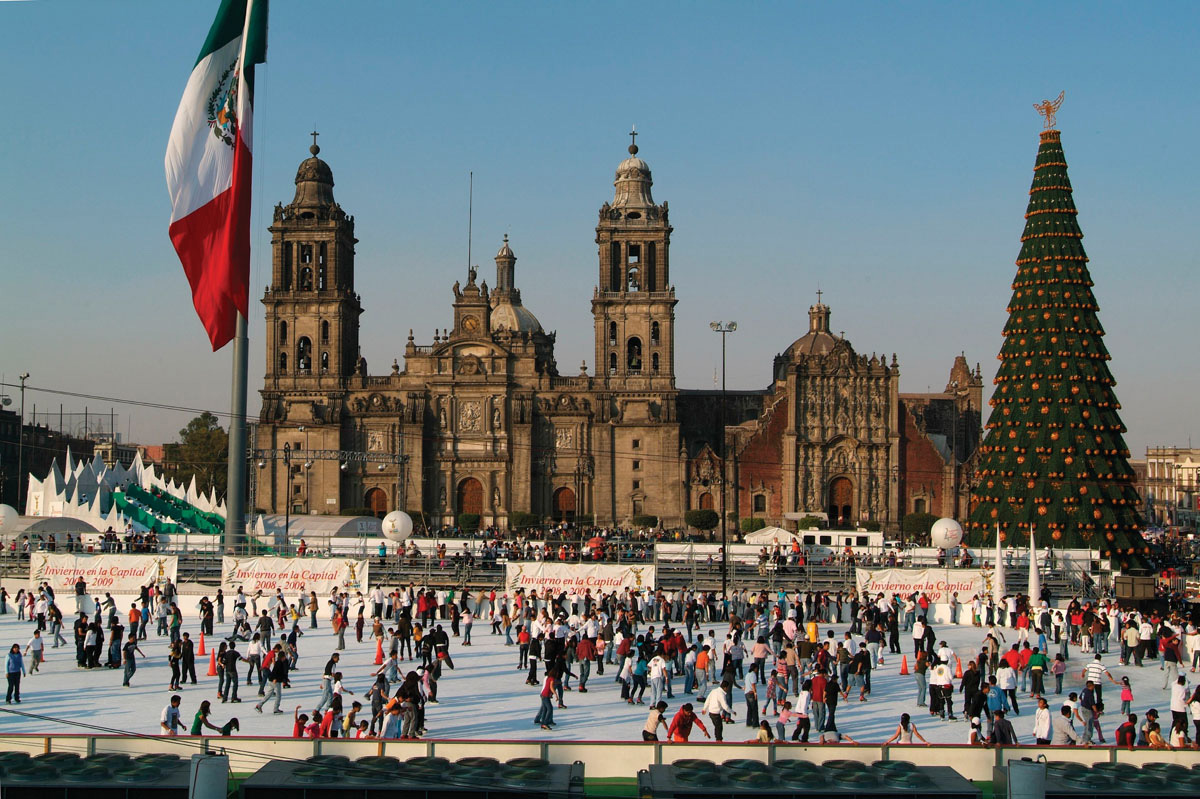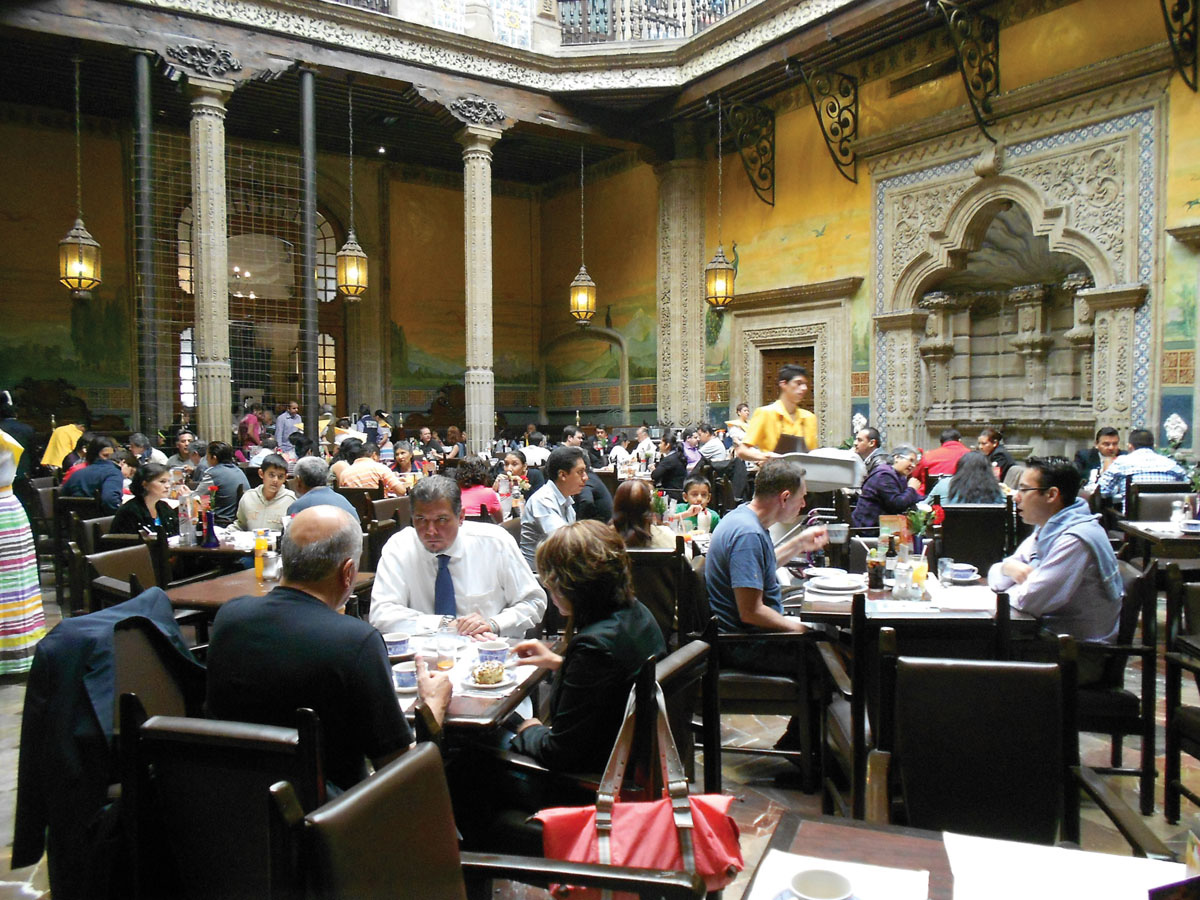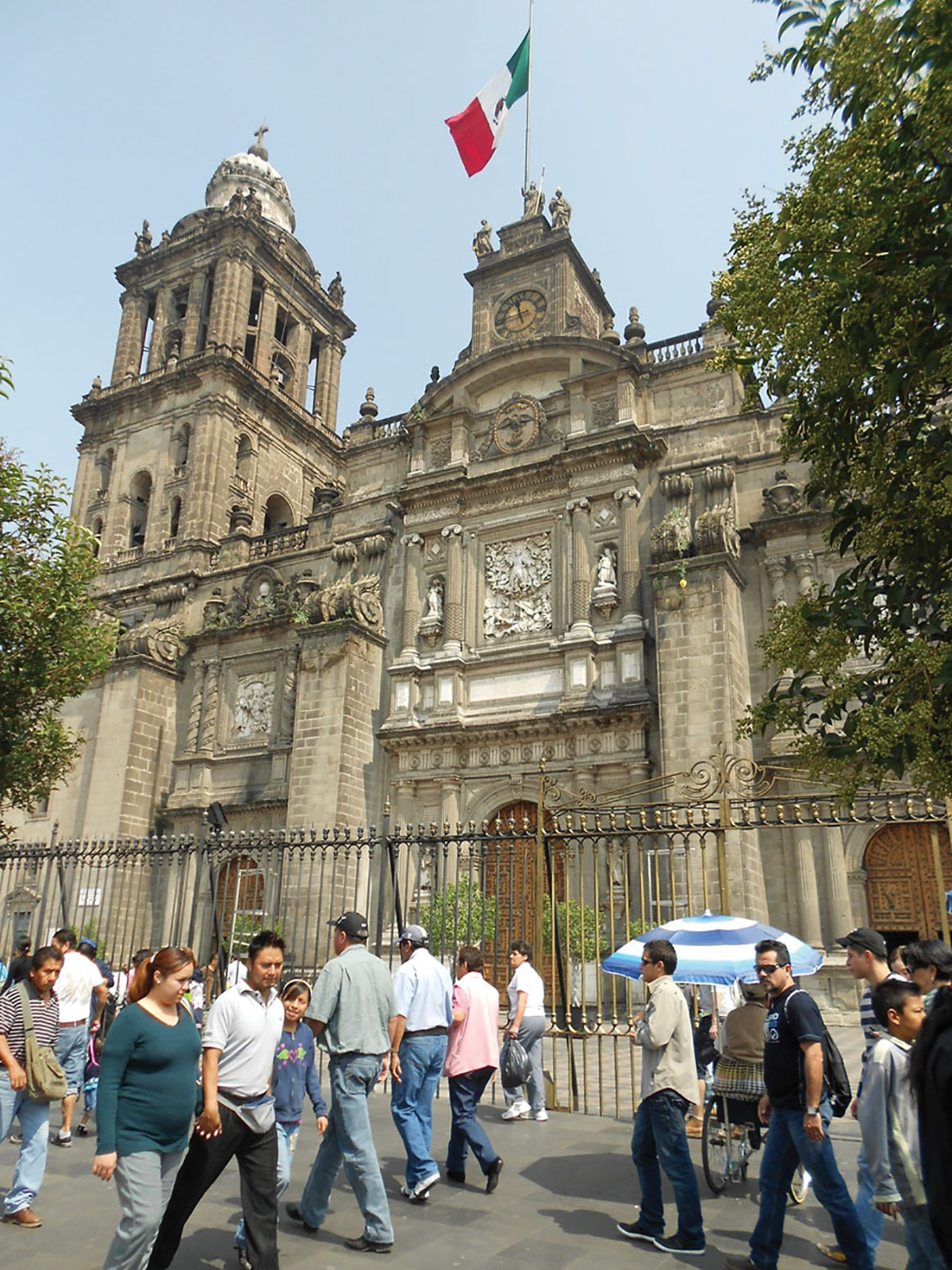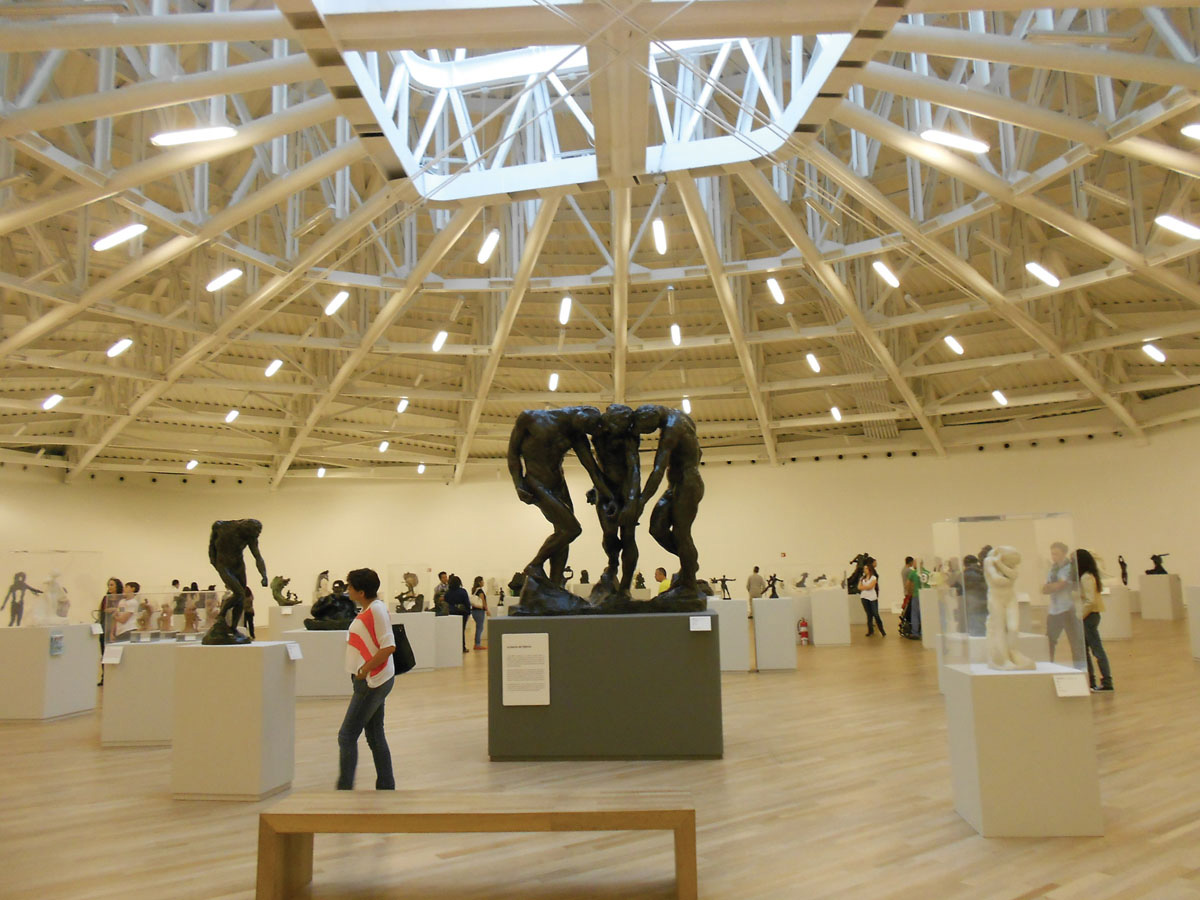 “Voz de la guitarra mía, al despertar la mañana quiere cantar su alegría a mi tierra méxicana.” And so goes the lyric to México Lindo Y Querido, the unofficial anthem of Mexico made famous by the voice of El Charro Cantor. If you want to visit a place that combines enchantment and romance with history, spices, colors, culture and even magic — welcome to Mexico City.
“Voz de la guitarra mía, al despertar la mañana quiere cantar su alegría a mi tierra méxicana.” And so goes the lyric to México Lindo Y Querido, the unofficial anthem of Mexico made famous by the voice of El Charro Cantor. If you want to visit a place that combines enchantment and romance with history, spices, colors, culture and even magic — welcome to Mexico City.
What other place in the world adds picante to their candy or celebrates El Dia De Los Muertos [The Day Of The Dead] with foods honoring the departed, candy skeleton skulls, flowers, libations and fiestas in cemeteries with the pomp and circumstance befitting the living, yet celebrating the deceased? Mexican literati Octavio Paz summed it up best when he proclaimed: “A civilization that doesn’t celebrate death doesn’t know how to live.” And live, they do, in Mexico — it’s like discovering the Wizard of Oz for the first time in Technicolor.
As legend goes, the city was founded after the Aztec god of the sun and war Huitzilopochtli indicated that an eagle with a serpent in its beak perched on a cactus would be the sign of where to build. Soon conquistador Hernán Cortés would pilfer and plunder the settlement for the Spanish crown building a new city over the ruins. From this coalescence of indigenous and the new European world emerged Mexico City.
 The area known today as downtown Mexico City, or Centro Histórico, was built in the 16th Century on the rubble of the conquered and destroyed ancient City of Tenochtitlan. Once the empire of The Aztecs, it later became the seat of power for the Spanish crown in the colony known as New Spain. El Centro contains the city’s most historical landmarks, separated into zones. Zone A consists of the pre-hispanic city and its eventual expansion with independence, while Zone B showcases buildings constructed at the end of the 19th Century that are central to the preservation of the cultural heritage of the area.
The area known today as downtown Mexico City, or Centro Histórico, was built in the 16th Century on the rubble of the conquered and destroyed ancient City of Tenochtitlan. Once the empire of The Aztecs, it later became the seat of power for the Spanish crown in the colony known as New Spain. El Centro contains the city’s most historical landmarks, separated into zones. Zone A consists of the pre-hispanic city and its eventual expansion with independence, while Zone B showcases buildings constructed at the end of the 19th Century that are central to the preservation of the cultural heritage of the area.
The centerpiece of it all is the Zócalo, the largest plaza in Latin America, 2nd largest only to the Red Square in Moscow. Here, every Sept. 15, from Palacio Nacional, El Grito (The Shout) is accompanied by the ringing of the Bell of Dolores. It is effectuated by the sitting president to mark the celebration of independence. A bit further, on the northern side of the Zócalo, you’ll find the Metropolitan Cathedral, the oldest and largest Gothic cathedral in The Americas built in 1573 and finished in 1813, originally serving as a sacrifice shrine for The Aztecs.
 Northwest of the Zócalo, and demolished by the conquistadors in the 1520s, stands the Templo Mayor archeological site and museum. Steps from the museum you come upon Sanborn’s de los Azulejos, the historical Mexican baroque building named after the blue fabricated tile from Puebla that embellishes the façade. A favorite of poets and intellectuals, it is said that Pancho Villa and Emilano Zapata were frequent patrons there and the establishment’s Enchiladas Suizas are just as infamous.
Northwest of the Zócalo, and demolished by the conquistadors in the 1520s, stands the Templo Mayor archeological site and museum. Steps from the museum you come upon Sanborn’s de los Azulejos, the historical Mexican baroque building named after the blue fabricated tile from Puebla that embellishes the façade. A favorite of poets and intellectuals, it is said that Pancho Villa and Emilano Zapata were frequent patrons there and the establishment’s Enchiladas Suizas are just as infamous.
Moving on, El Instituto Nacional de Bellas Artes is the cultural institute responsible for stimulating, nurturing and promoting the diffusion of art throughout the country. Built in 1913 by Italian architect Adamo Boari, more work was done in the 1930s by Federico Mariscal. It is a majestic building that combines Neoclassical, Art Deco and Art Nouveau. West of El Centro Histórico, it houses an impressive collection of murals by the most illustrious Mexican artists: Jose Clemente Orozco, David Alfaro Siqueiros and Diego Rivera.
Built in 1785 and used as residence to Mexico’s presidents until 1939 when it was converted into the National History Museum, it’s name means Hill of the Grasshoppers in indigenous Náhualt. The Castillo y Bosques de Chapultepec that sits on the hill was a consecrated site for Aztec kings and later turned into a palace during the 2nd Mexican Empire, as the opulent abode of Emperor Maximilian & Empress Carlota.
Moreover, Museo Soumaya is Mexico’s newest museum located in the upscale neighborhood of Polanco. It is a labor of love for the richest man in the world, Carlos Slim Helú, to his late wife, Soumaya. Slim’s impressive 70,000 pieces strong collection of works by Rodin, Dali, Degas, Miro, Rubens, Monet, Renoir and Diego Rivera — among the many other artists — is estimated to be worth $750 million. The futuristic metal encapsulated building was designed by Slim’s son-in-law architect Fernando Romero.
 Modeled after Paris’ Champs-Élysées and built by Ferdinand Von Rosenzweig in the 1860s, Paseo De La Reforma, originally named Paseo de la Emperatriz was commissioned by Emperor Maximillian to bring a European flair of refinement to the city. It’s a wide avenue lined with lush trees that cuts diagonally across the city with several monuments and fountains on display put in place by President Manuel Ávila Camacho during his 1942 endeavor to beautify the city. One of the most significant monuments of El Paseo is El Ángel De La Independencia built in 1910 to commemorate the centennial of Mexico’s war of independence. And by far, the most recognizable monument is the bronze sculpture erected of La Diana Cazadora (Diana: Goddess Of The Hunt) symbolic of The Archer Of The North Star.
Modeled after Paris’ Champs-Élysées and built by Ferdinand Von Rosenzweig in the 1860s, Paseo De La Reforma, originally named Paseo de la Emperatriz was commissioned by Emperor Maximillian to bring a European flair of refinement to the city. It’s a wide avenue lined with lush trees that cuts diagonally across the city with several monuments and fountains on display put in place by President Manuel Ávila Camacho during his 1942 endeavor to beautify the city. One of the most significant monuments of El Paseo is El Ángel De La Independencia built in 1910 to commemorate the centennial of Mexico’s war of independence. And by far, the most recognizable monument is the bronze sculpture erected of La Diana Cazadora (Diana: Goddess Of The Hunt) symbolic of The Archer Of The North Star.
As is the case with many downtowns in major cities around the world, El Centro has also gone through a gentrification — the moving in of the gentry class into historical areas once in decay and now converted into residences and shops, creating an urban economic environment that’s thriving — and better yet…awaiting your arrival.











